HOT AND SUNNY DAY IN MARLERA
Marlera is a place that appeared in many of my old posts, sometimes named - sometimes not. It's a coastal area three or four kilometers from the village of Liznjan and about five or six kilometers from where I live. Since the setting is the same, you may think that the posts are very repetitive. Well, believe it or not, I don't think they are. There is always something different to explore, especially if one is focused on small details.
Today I'll show you some elegant flowers, some fascinating insects, and a bit of the scenery too.
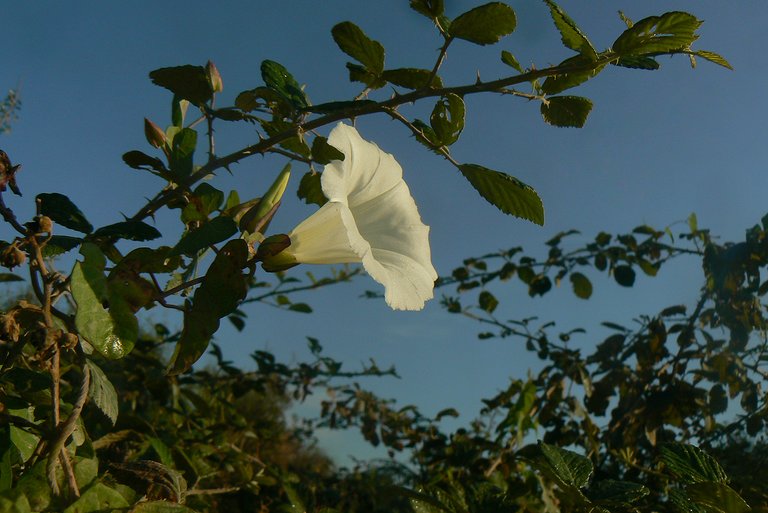
This is the Calystegia silvatica flower. One of the many I encountered in Marlera. In the following set of eight photographs ...
... you can see the small moth from the Choreutidae family that was feeding on nectar in the center of one of those trumpet-like flowers. The name of the species is Choreutis nemorana, commonly known as the fig leaf roller. There are plenty of fig trees in the area for the larvae to feed and grow.
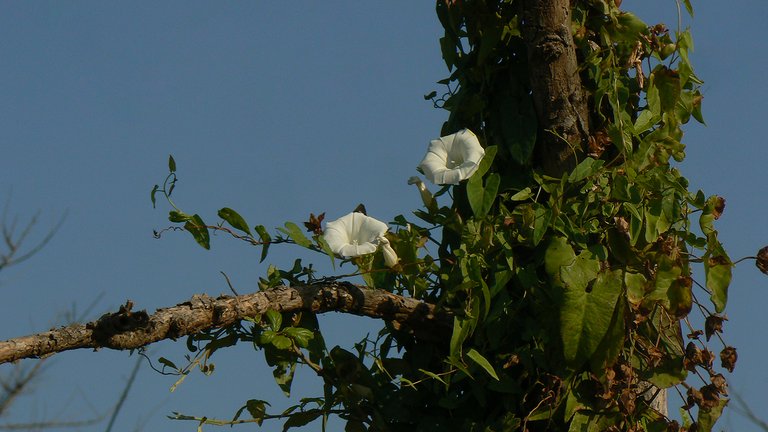
Calystegia silvatica is a climbing plant that covers the shrubs and trees in many coastal places, especially along the narrow paths and unpaved roads that lead from and to the sea.
Here you can see the green climbing plant hugging the dead tree.
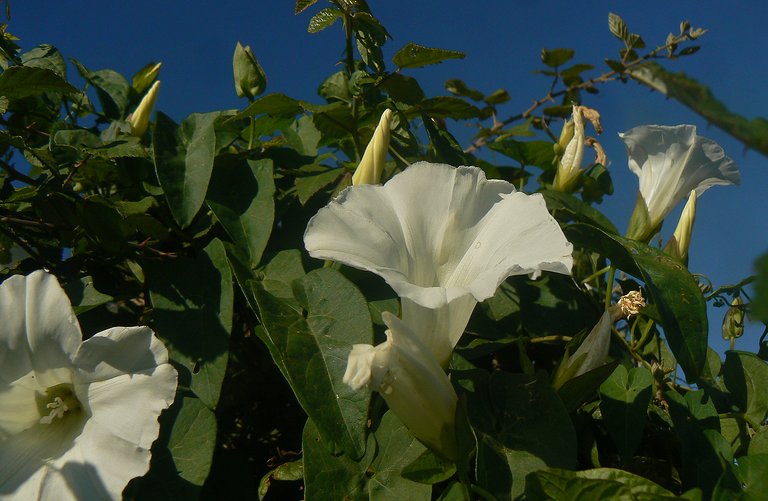
I like these white flowers very much ...

... so I photographed quite a few of them for this post ...
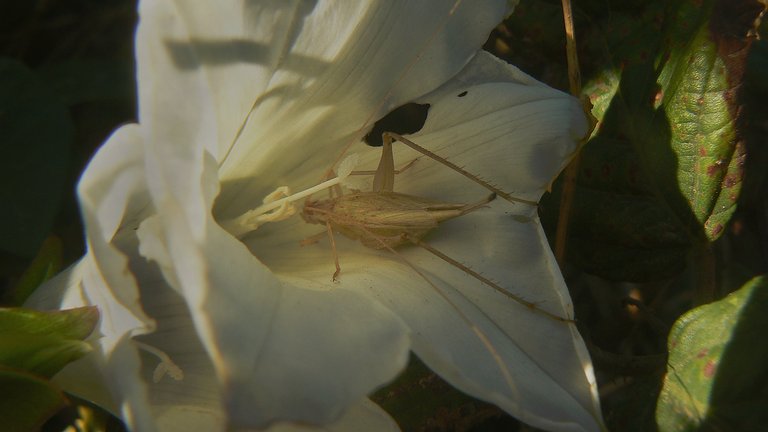
... and I found quite a few insects ...
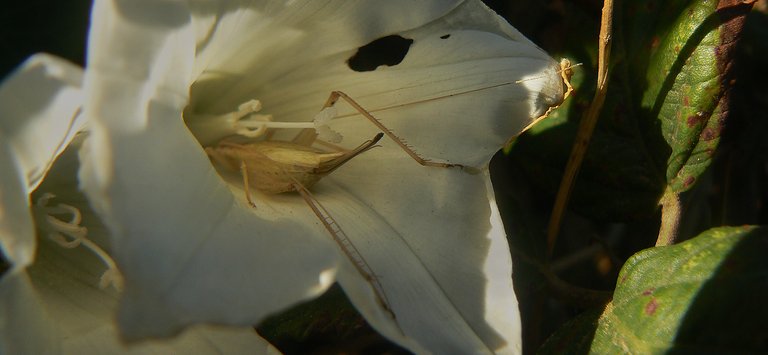
... that were sucking the nectar or chewing the pollen grains and petals.
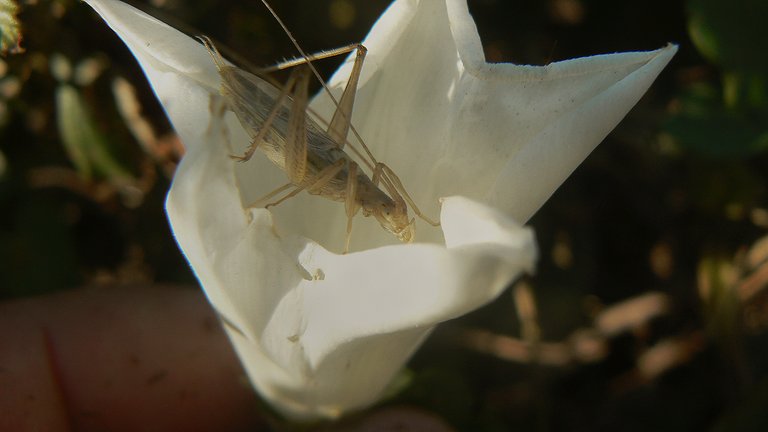
In this and the previous two photographs, you can see the Italian tree cricket (Oecanthus pellucens). This insect feeds on young leaves and delicate flower parts.
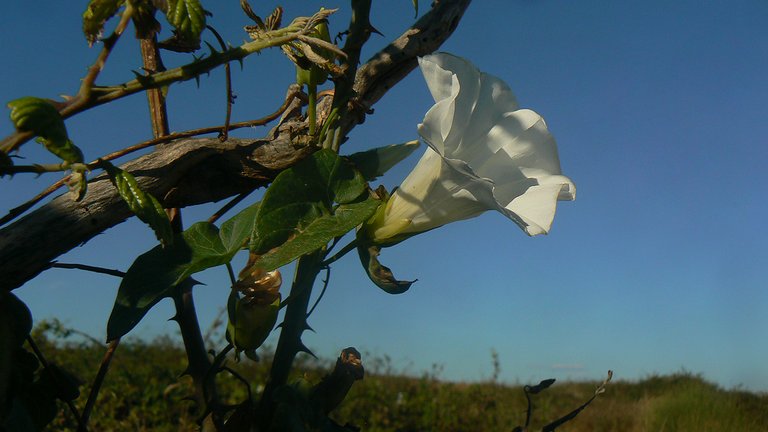
In the center of another flower ...
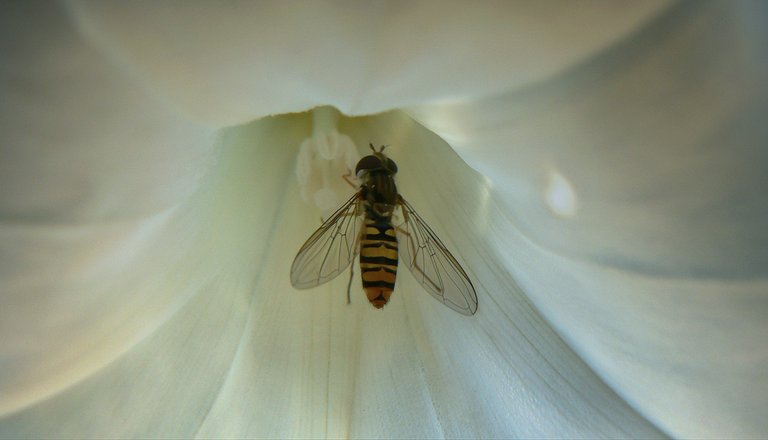
... a fly from the Syrphidae family was enjoying the nectar. The name of the species is Episyrphus balteatus.
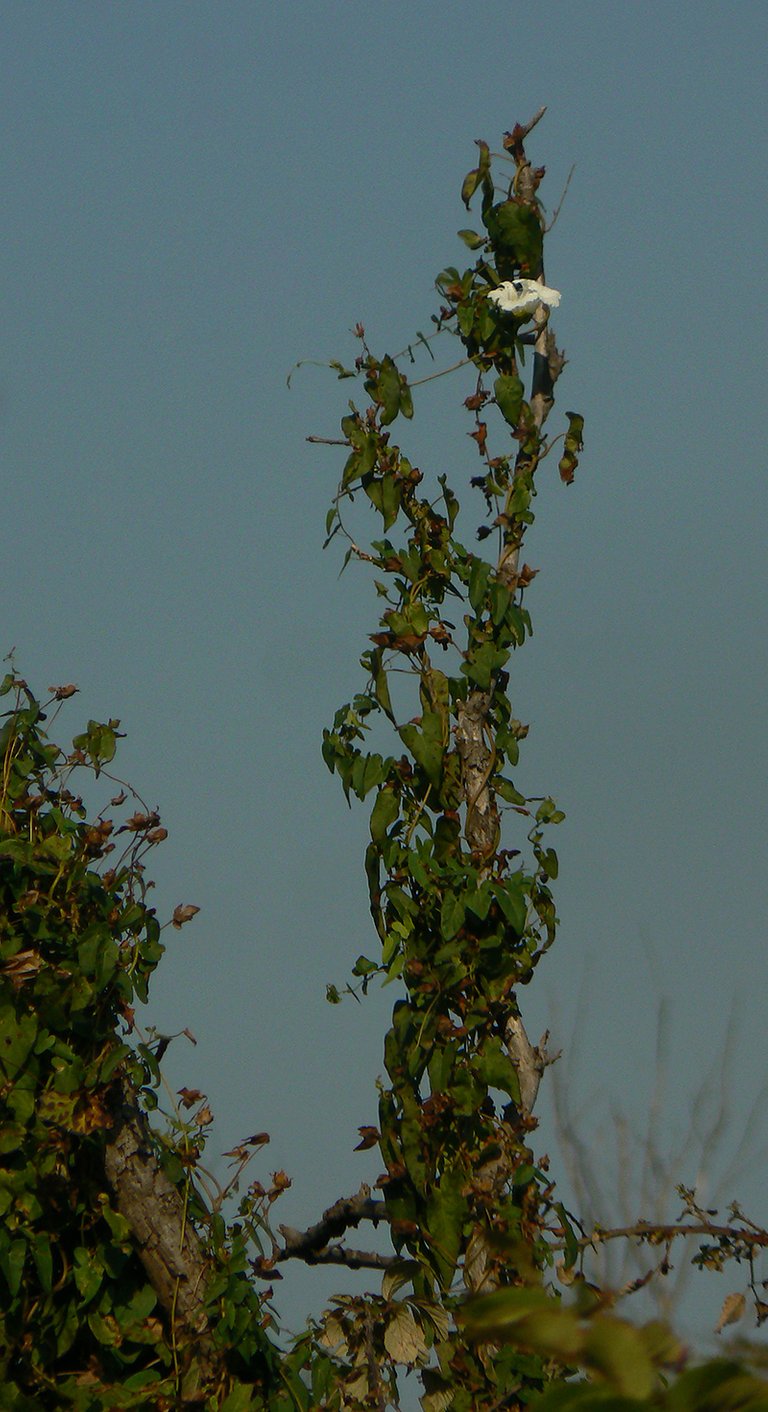
Some flowers were situated pretty high ...
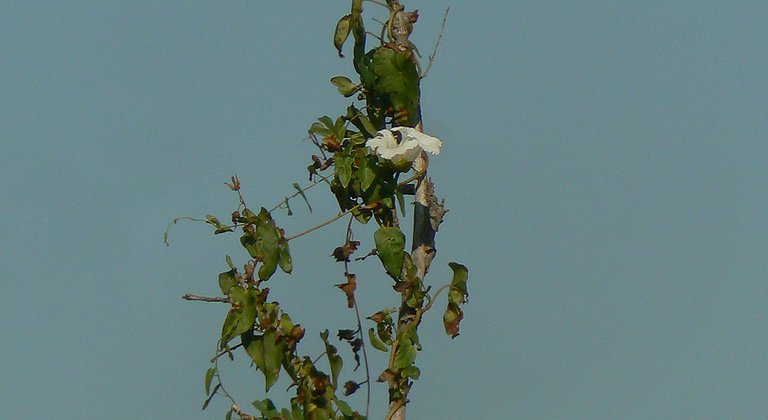
... so I couldn't check if there is something interesting inside them.
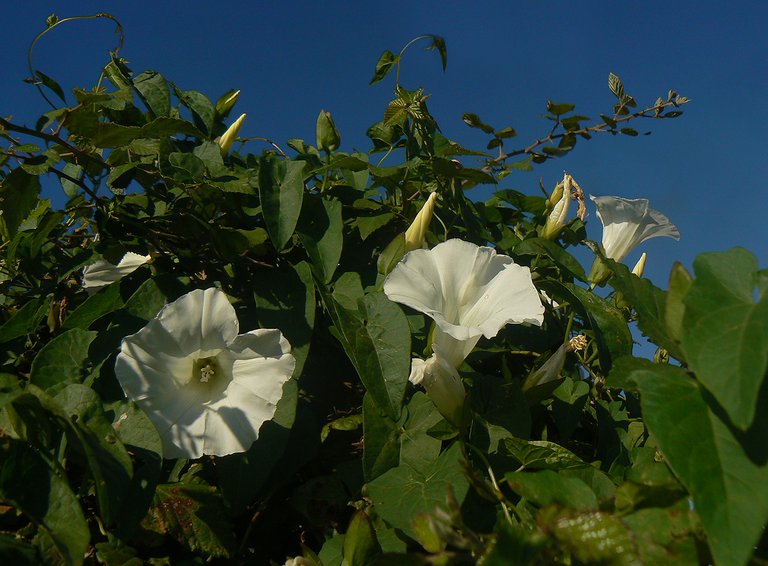
In one of the flowers produced by the Calystegia silvatica plant that was covering the blackberry shrubs ...
... I found a bushcricket nymph.
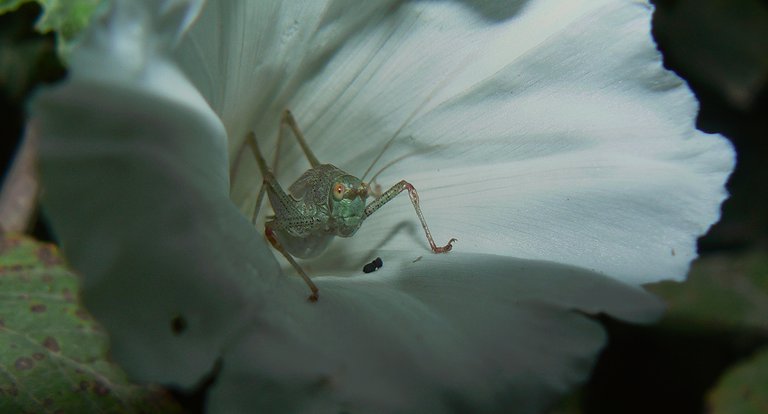
This is a young, not completely developed Phaneroptera nana. At this stage of their life, these bushcrickets often feed on anthers and petals.
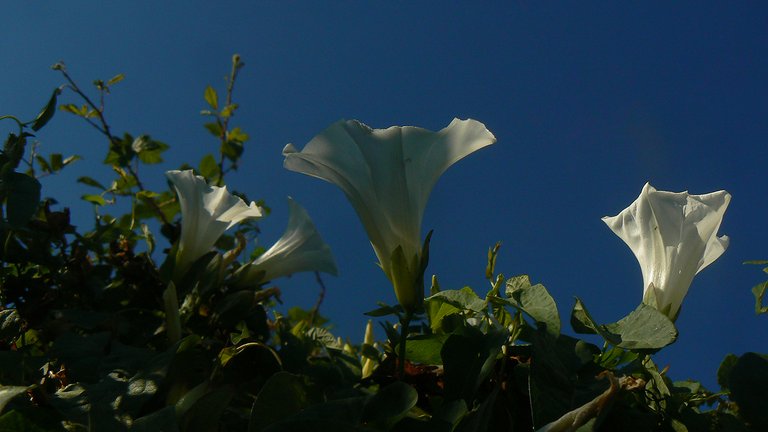
All these photographs were taken late in the morning and around noon ...
... when the flowers are open.
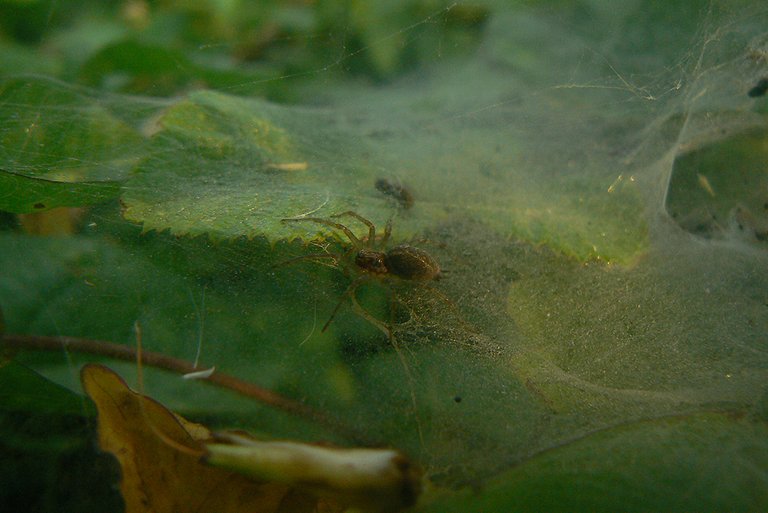
During the night and early in the morning, the situation is considerably different ...

... Calystegia silvatica flowers are closed ...

... and shrubs are covered with dew. The dew is especially visible on spider webs.
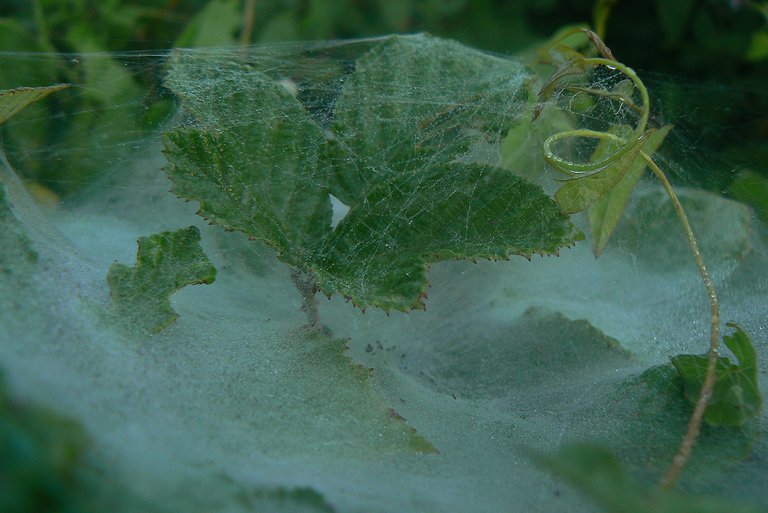
In this and in the previous photograph, you can take a look at the intricate work ...

... of the Agelena labyrinthica ...

... a funnel-web spider from the Agelenidae family.
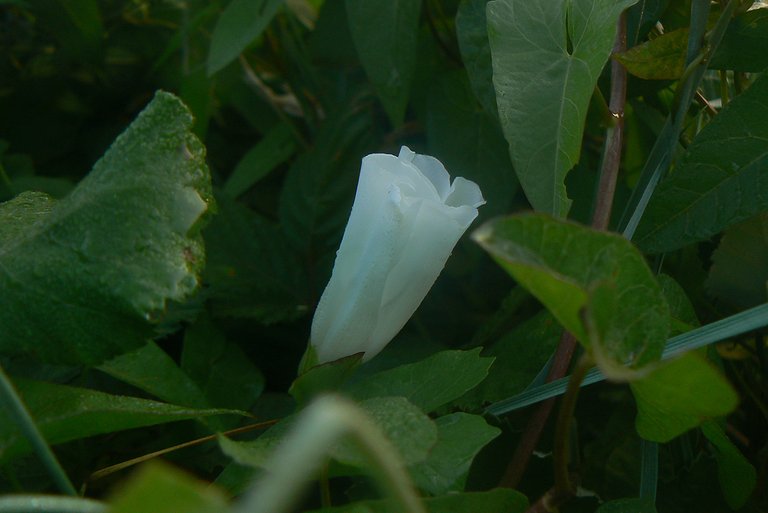
As the sun was slowly climbing in the morning sky ...
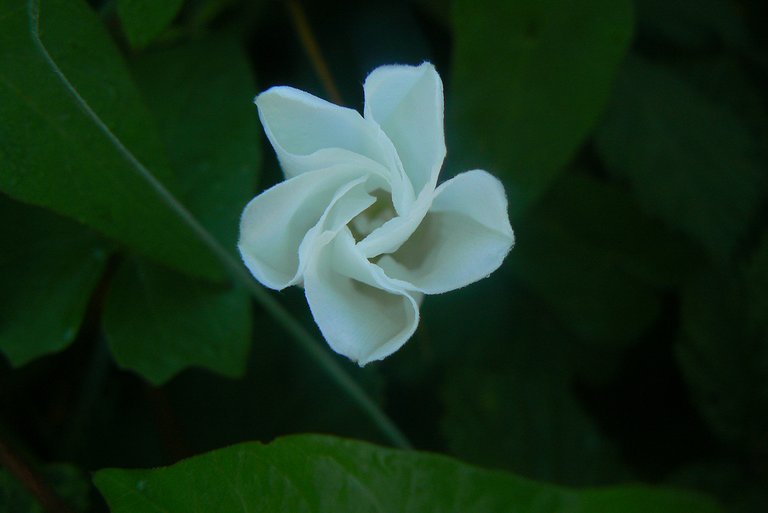
... I watched the flowers open.
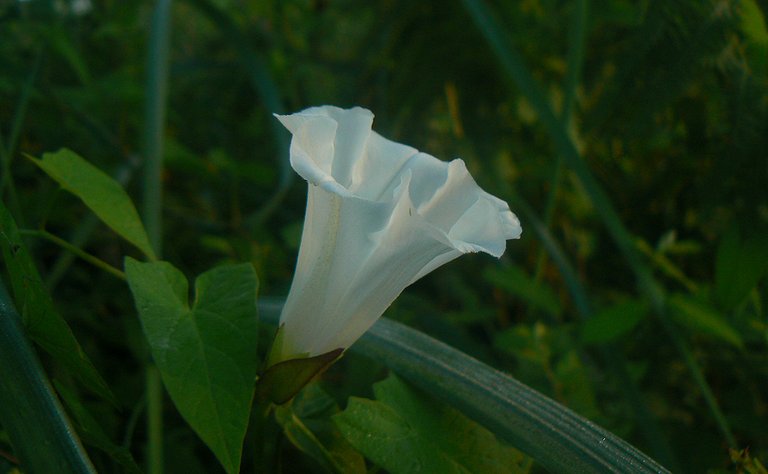
It was a soothing, meditative experience.

Here you can see a dew-covered Persicaria maculosa plant.
The small bee, shown in this triptych...

... was found and photographed in one of the partially open flowers. When the following shot was taken ...
... the flower was almost completely open. In the case of this bee, I can't tell you the name of the species. The flowers, shown in the following shot ...
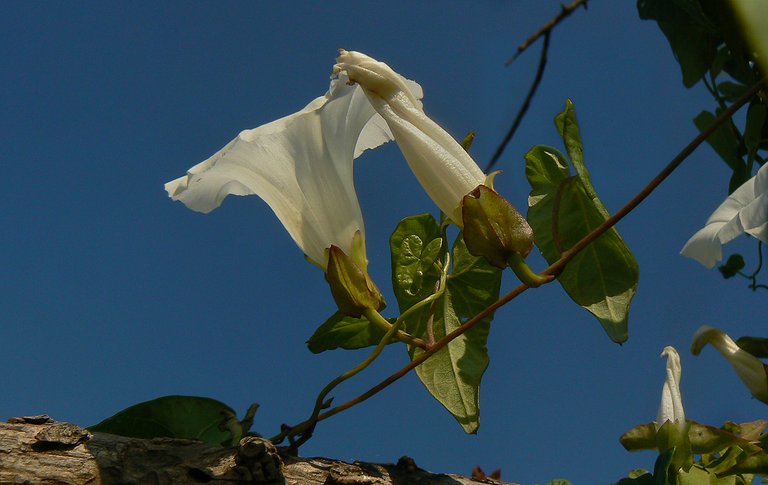
... were photographed around noon ...

... on the Calystegia silvatica plant that climbed the branches of a small dead tree. At the base of that same tree ...
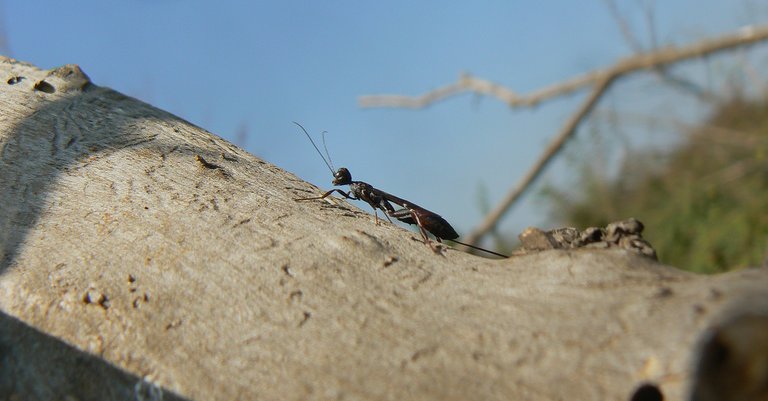
... I found an interesting wasp.
This is the Stephanus serrator, a species from the Stephanidae family. Females, with their long ovipositors, lay their eggs inside the galleries made by the larvae of wood-boring beetles. Then the wasp's larvae come out of the eggs, they feed on the offspring of the beetles. There is a good chance that the parasitic wasp found the beetle larvae in this dead tree. The following photograph ...
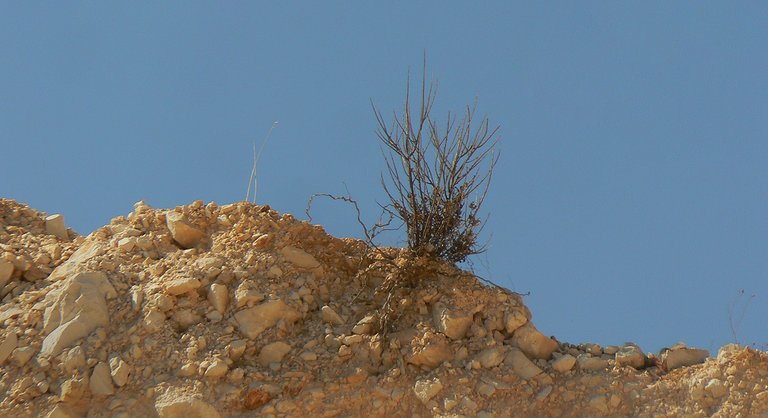
... was taken fifty or sixty meters further ...
... in the abandoned stone quarry.
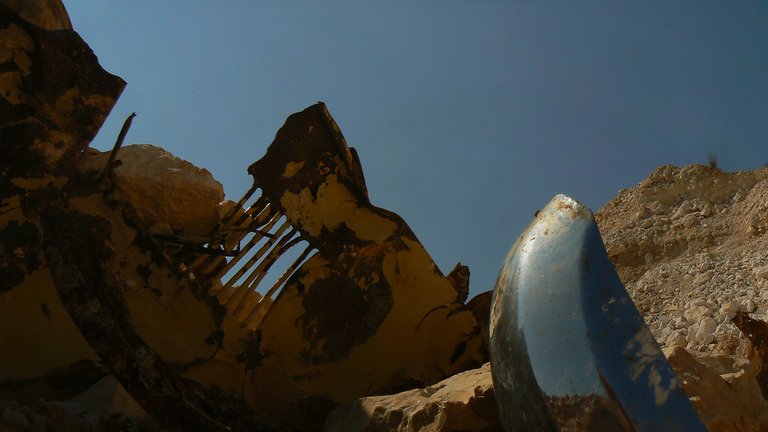
You can always find piles of garbage in that desert-like place surrounded by abundant vegetation. Here you can see the parts of an old rusted car or some similar machine.
In this set of four photographs, I'm part of the scenery. You can see me posing in a pseudo-meditative pose. I was only pretending to meditate, of course. I have no idea how to do a proper meditation of that classic, iconic type shown in movies, books, memes, and all over the Internet.
On one of the blackberry shrubs that has grown on the edge of the quarry ...
... I found this beautiful European mantis (Mantis religiosa).
In these two photographs, the mantis is busy cleaning its feet. While I was photographing the insect ...
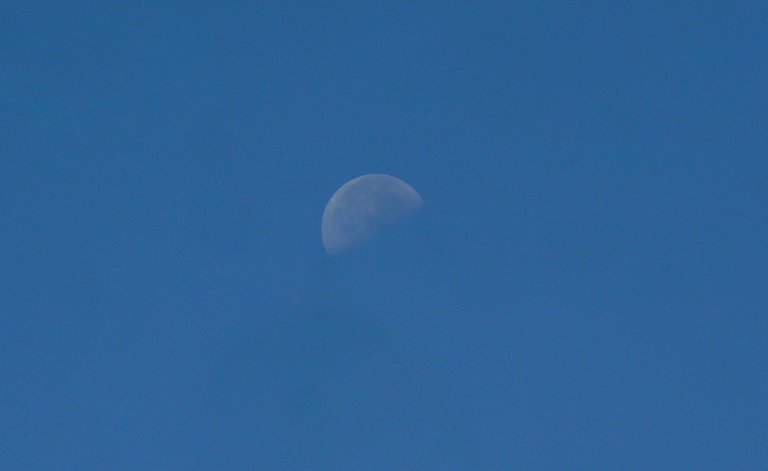
... the moon was looking down at me.
At one point the mantis climbed on my hand.
This species can be green or brown and in quite a few shades of the aforementioned colors. With that said, I never saw a vivid yellow one before. This was a very unique experience. Probably unforgettable.

After this photograph in which the mantis is posing on the plant known as Clematis vitalba in scientific circles ...
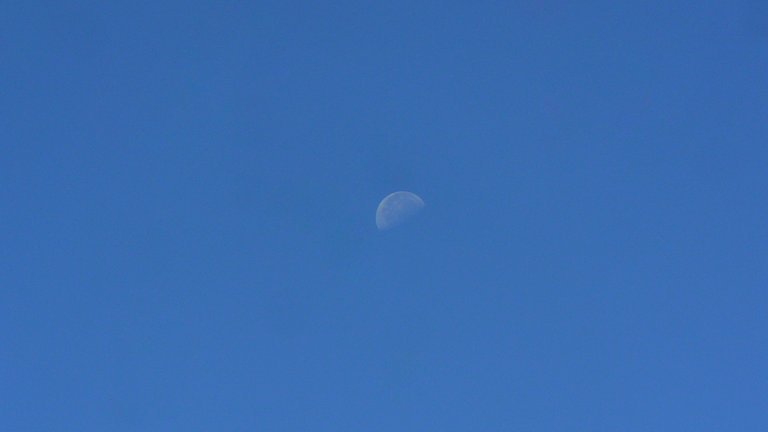
... I took another look at the moon high above me ...

... and continued walking around the area in search of interesting stuff to photograph and blog about. At one point, while rambling along the shore, I noticed this mysterious light on the surface of the calm water in one of the inlets. Can't tell you what is this exactly. A UFO thing maybe? Or something terrestrial but highly supernatural? Who knows.
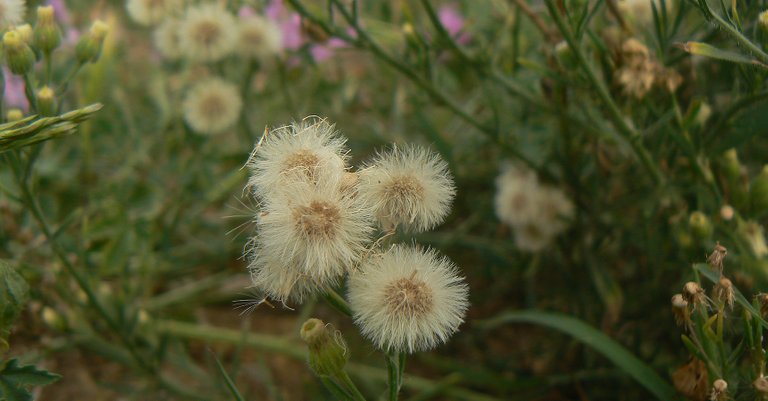
I also photographed a bunch of fluffy Erigeron bonariensis seeds along the way, and then ...
... I found a multitude of small red fruits ...
... of the Dioscorea communis plant.
While photographing the fruits ...
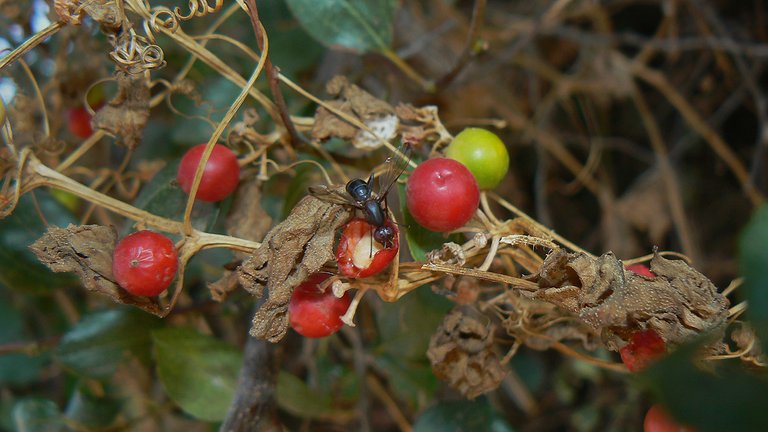
... I noticed a fly on one of the dry stems of the climbing plant that was hanging from the shrubs.
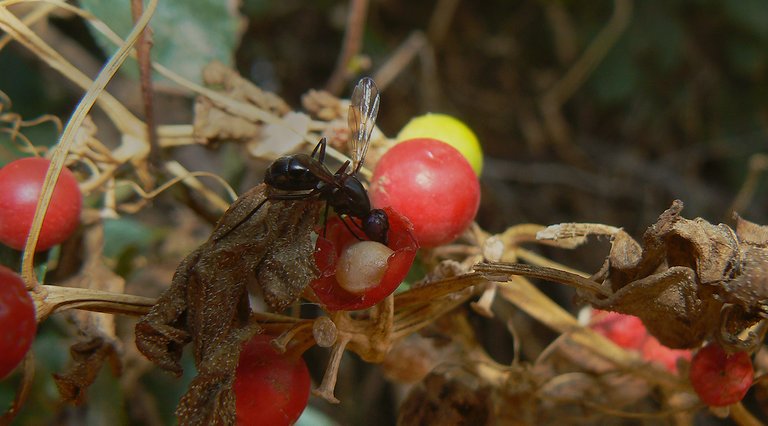
The fly was feeding on the little red berries.
In this photograph, the fly is cleaning its mouth after the sticky meal.
When it comes to the name of the species, this is the Cephalia rufipes from the Ulidiidae family.
In the same area, not far from Dioscorea communis ...
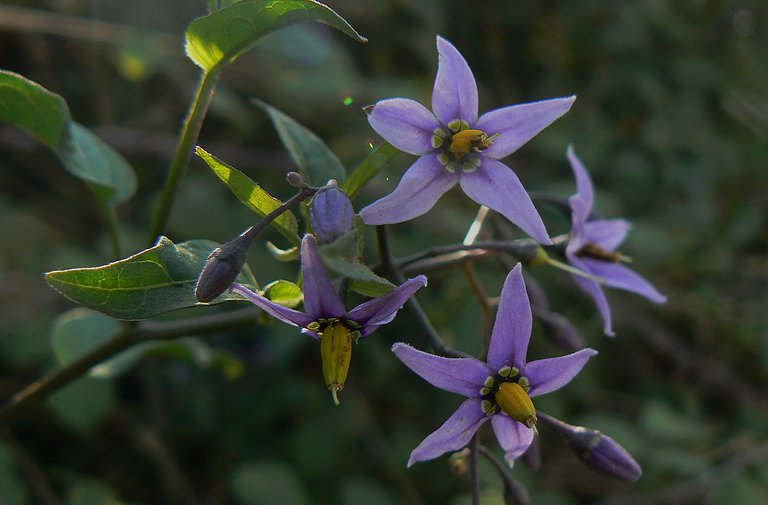
... I photographed the Solanum dulcamara flowers.

Here you can see the fruits and flowers in the same shot.
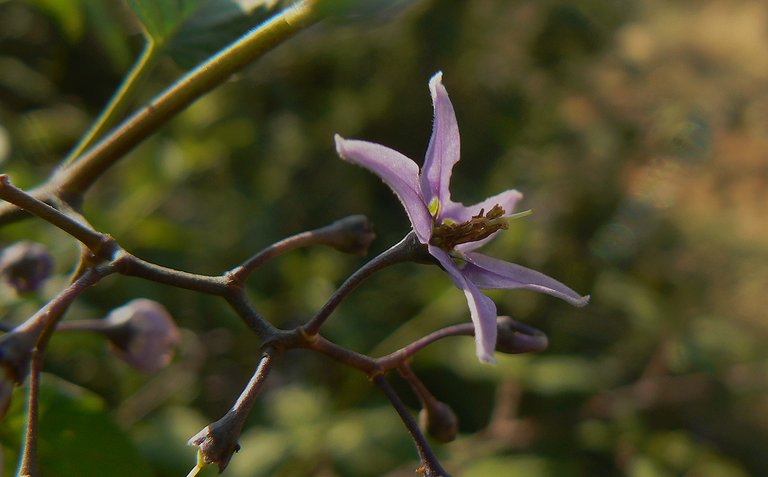
This is a portrait of one single Solanum dulcamara flower.
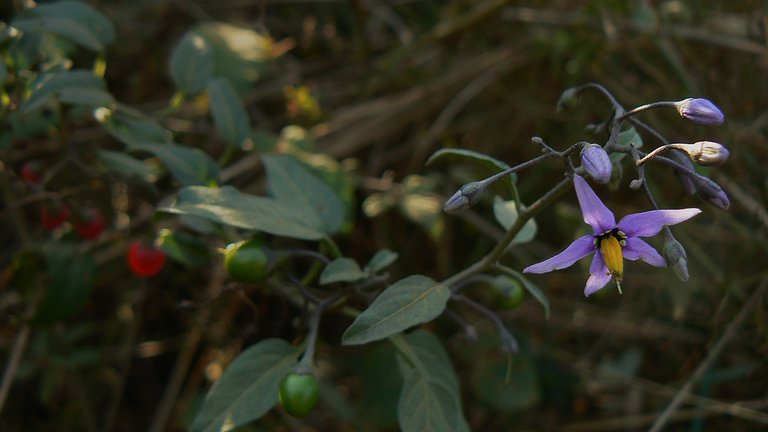
After this photograph ...
... I took one last look at the Dioscorea communis berries ...
... I walked back to the Calystegia silvatica plants where I photographed another Choreutis nemorana moth. This one was resting on the edge of the beautiful, trumpet-like flower and flew away a second after the photograph was taken.
AND THAT'S IT. HOPE YOU ENJOYED THE PLANTS, THE ANIMALS, AND THE JOURNEY IN GENERAL. AS ALWAYS HERE ON HIVE, THE PHOTOGRAPHS ARE MY WORK.




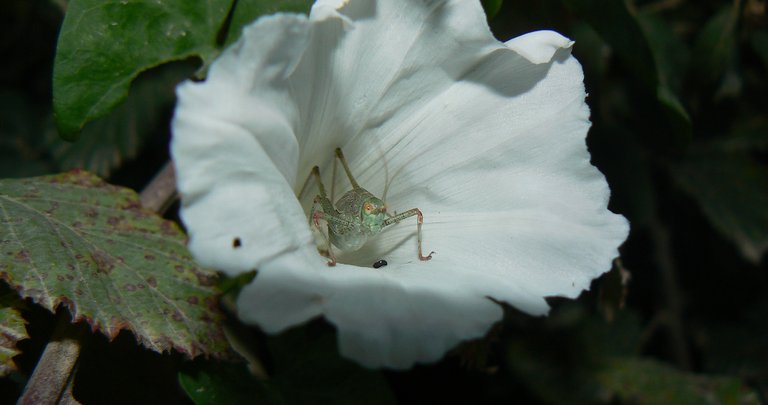


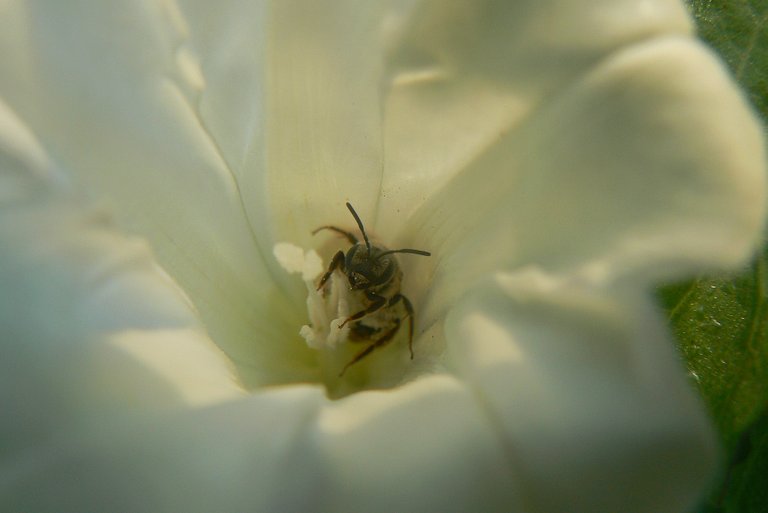



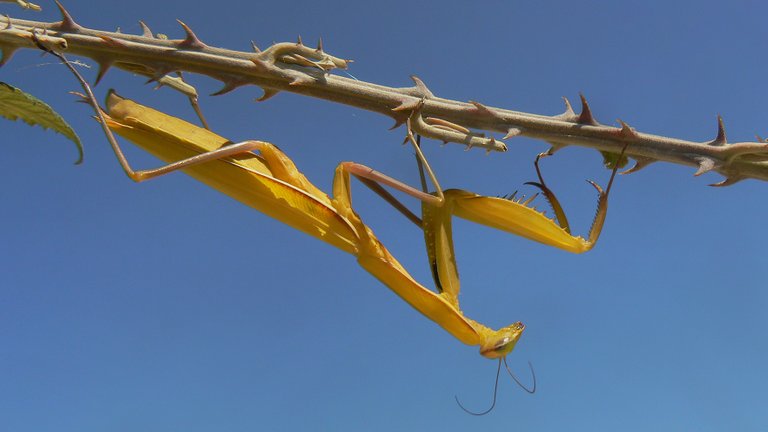


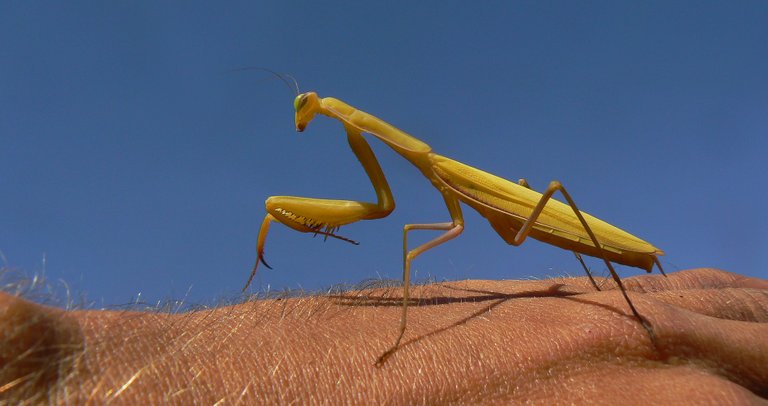

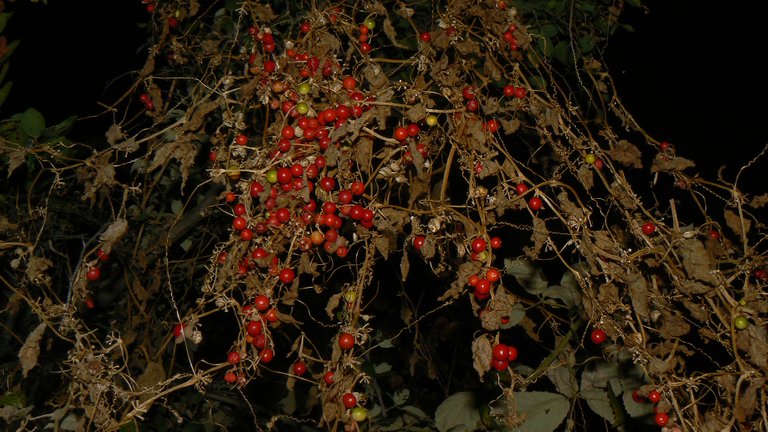
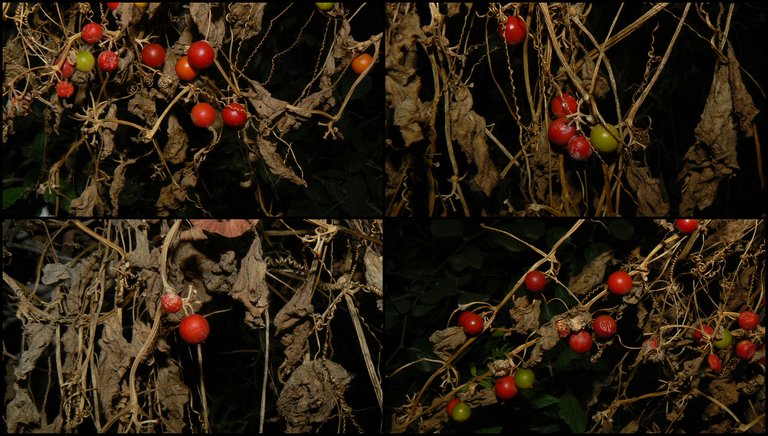

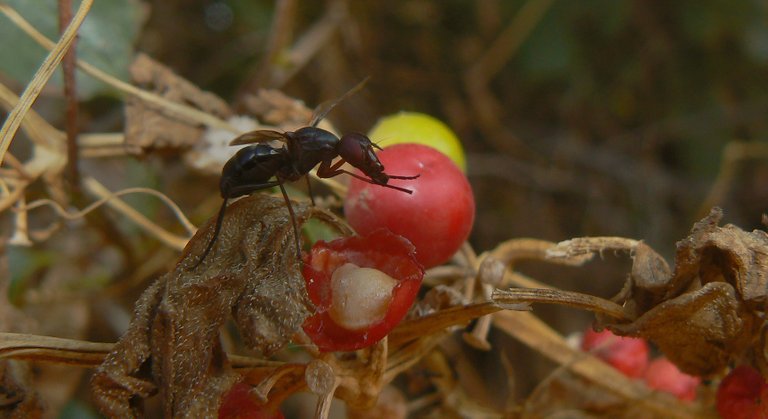




Mother Nature is very clever at adapting to any situation. Even a dead tree provides a perfect home for climbing plants. Where there is death, there is often life (moths for example, as you show in your photos). Stunning Nature shots as always !LOLZ 👌
lolztoken.com
A toothbrush works much better.
Credit: reddit
@borjan, I sent you an $LOLZ on behalf of fun.farms
(4/10)
ENTER @WIN.HIVE'S DAILY DRAW AND WIN HIVE!
Insects are always there to suck nectars of flowers and some of them even eat up entire leaf and flowers.
Photos are worth-seeing as always. How do you keep in mind all the names of flowers and insects! It's really surprising!
Lol you saw a UFO!! Haha. May be it was just reflection of light over the waves created by a fish or other aqua animal.
Thanks man for sharing those expectacular photos of flowers, insects and unknown fash of light on the water.
I don't keep them in mind 😄 I search them on the Internet.
I really like this shot 👌
Here, it really should so it doesn't get caught. Lovely photos as always.
Even from the pictures, we can tell how hot the weather is.
It is indeed very hot. You always take good pictures
You've never taken a bad one
Keep it up!
ah, how I miss seeing the morning dew on top of those kinds of spider web. always in my childhood memories when I still went accompany my parent to the rice field and crossed an open field on the way.
lovely shotsas always myf friend, love how you can alsy find those small insect.
!LUV !PIZZA
@borjan, @ekavieka(2/5) sent LUV. | connect | community | HiveWiki | NFT | <>< daily
! help(no space) to get help on Hive. Info$PIZZA slices delivered:
@ekavieka(1/5) tipped @borjan
If there is such a beautiful place, the heart of a person wants to visit again and again, the way we see in the pictures that the trees are very beautiful and the insects are also looking very beautiful. It used to not happen but now it has because of your post.
The photos you show are very interesting, sir. @borjan
Those are wonderful part of nature. You have found some beautiful flower and insect. Which are looks amazing.
These shots are very beautiful, especially the off-white colored flower, I love the shape and the color so much.
I like the effort you put in place to take these shots.
Those shots of the white flowers are pretty cool! I especially liked when they started to open.
I often find Calystegia silvatica flowers in the area, but the shots you share are more beautiful
I see the reputation of your account 78 me remind me of the independence day of the Republic of Indonesia I see the reputation of your account 78 me remind me of the 78th independence day of the Republic of Indonesia
Cool 🙂 Have a great independence day.
May there also feel victory always and I have made a butterfly out of red and white Origami paper to remind all friends in hive.blog
You are absolutely right mate, Nature has so much to offer, you can't cover anything. The more you go in depth, the more things you will come out with. Marlera is no doubt a wonderful place to explore and you can't explore completely in two or three visits. You need more visits.
Those flowers are rare to be seen in our place. Your capture is so topnotch.
https://twitter.com/lee19389/status/1691830562753847361
#hive #posh
!discovery 30
the watermelon post brought me to your old posts from 2/3 years ago!
This post was shared and voted inside the discord by the curators team of discovery-it
Join our Community and follow our Curation Trail
Discovery-it is also a Witness, vote for us here
Delegate to us for passive income. Check our 80% fee-back Program
An incredible shot, to the natural nature that you show is not in doubt at all, the praying mantis and the trapped spider look very interesting
https://twitter.com/LovingGirlHive/status/1691882326261903663